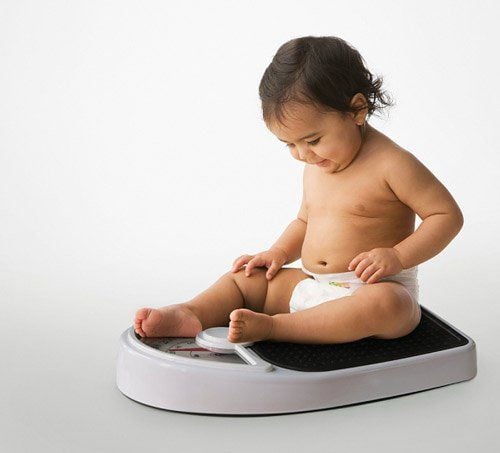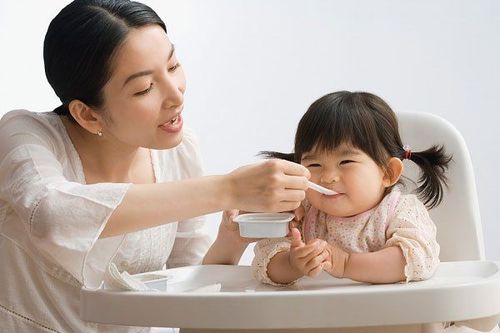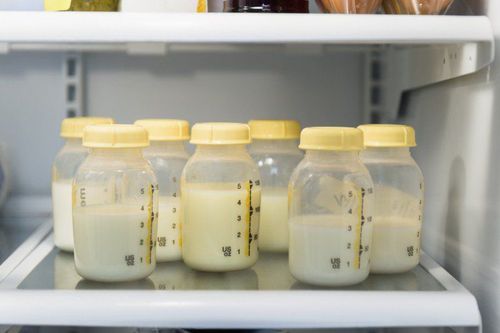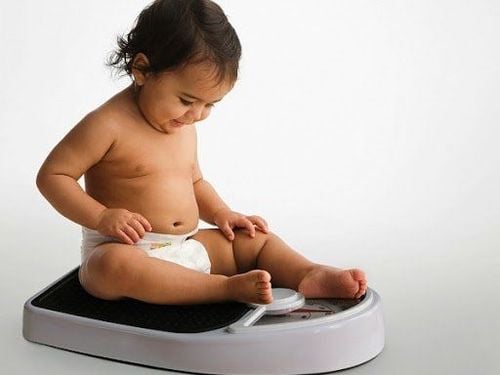2-year-old children are in a stage of rapid growth in weight and height. Accordingly, how many kg is the average weight for a 2-year-old child and what factors affect the child's weight? This article will help you answer the above question.
1. How does a child's weight develop?
Weight is one of the factors that reflects the nutritional and developmental status of a child. Standard weight is the weight that a child should achieve at each age. A child's weight that exceeds the standard may indicate overnutrition or obesity, and conversely, a weight lower than the standard weight reflects underweight or malnutrition.
The weight development of a child varies by age. Accordingly, in newborns, weight increases rapidly after birth. When a child is 1 year old, weight can increase by one and a half times compared to when they were born. In addition, a child's weight often changes gradually with age, so parents should monitor their child's weight periodically and compare it with the standard weight to help assess the child's development. For example, when a child is entering the 2-year-old stage, parents should monitor their child's weight based on the principle of "what is the average weight for a 2-year-old child", thereby helping parents have a suitable nutritional regimen and development orientation for their child.
2. What is the standard weight of a 2-year-old child?
How do 2-year-old children grow in height and weight? In fact, each child will have a different growth rate, depending on different aspects of life including genetic and environmental factors. According to the World Health Organization (WHO), the average weight of a 2-year-old girl is 12 kg, and the average weight of a 2-year-old boy is 12.5 kg.
To determine whether a child is growing at a healthy rate in terms of weight, parents should rely on the percentile chart published by the World Health Organization (WHO). The percentile chart is understood as the percentage of children whose measurements are lower than the percentile being considered. For example, a 2-year-old girl whose weight is at the 50th percentile of the weight chart means that she weighs more than 50% of girls of the same age worldwide. The normal weight range for children is between the 3rd and 97th percentiles. Weight outside the above percentile range does not mean that the child is abnormally overweight.
The growth of children in terms of weight and height is different at each stage, so if parents only look at the child's weight at a single point in time, it will be difficult to determine whether the child's development is according to normal standards or not. Instead, parents should monitor their child's weight periodically, for example, measuring the child's weight once a month... In case the child's weight is abnormal, such as being too high or too low, parents should consult a nutritionist for appropriate advice on the care regimen to help the child develop better.

3. What factors affect a child's weight development?
Monitoring and adjusting factors that affect a child's weight development will help parents have a more comprehensive child care regimen, especially when a 2-year-old child's weight is the age when children are developing a lot physically and mentally. A child's weight can be affected by the following factors:
3.1. Children's sleep
2-year-old children have begun to be more active and playful than in the previous stage. Children at this stage often tend to reduce their sleep time, especially during the day. Therefore, parents need to arrange a reasonable sleep time for their children and encourage them to sleep on time and wake up on time. Accordingly, a reasonable sleep time for 2-year-old children is about 11 - 12 hours at night and 1.5 - 3 hours during the day. Sufficient sleep time will help children relax, rest and support their physical and mental development.
3.2. Children's nutrition
Nutrition is an important factor in children's physical development. A reasonable diet will help optimize their development. Accordingly, parents need to ensure that their children are provided with adequate nutrients including starch, protein, fat, vitamins and minerals. The baby's diet is divided into 3 main meals, 2 snacks and the nutrition in the meals should be changed regularly to avoid the phenomenon of anorexia due to eating the same dish continuously for a long time. In addition, parents should feed their children about 1⁄4 cup of cereal, 3 tablespoons of protein, vegetables and fruits every day.

3.3. Diseases
One of the factors that affect a child's weight development is diseases, serious disabilities or post-surgical sequelae. For example, children aged 8-19 with a history of sickle cell disease often have lower weight and height than their peers.
3.4. Mother's health during pregnancy and care from adults
The mother's mood and health during pregnancy greatly affect the baby's development. The mother's stress can lead to mental and physical retardation in the child at birth. In addition, the mother's diet during pregnancy needs to have enough nutrients such as iron, DHA, folic acid, calcium, etc.
The care of parents, grandparents, relatives, etc. has a certain impact on the child's physical, mental and behavioral health.
For children to be healthy and develop well, they need a nutritional regimen that ensures quantity and balance of quality. If children are not provided with adequate and balanced nutrients, it will lead to diseases of excess or lack of nutrients, which will negatively affect the comprehensive development of children in terms of physical, mental and motor skills.
Children who do not eat properly are at risk of lacking micronutrients, causing anorexia, slow growth, poor absorption, etc. If they notice the above signs, parents should supplement their children with support products containing lysine, essential micronutrients and vitamins such as zinc, chromium, selenium, and B vitamins to help fully meet the nutritional needs of children. At the same time, these essential vitamins also support digestion, enhance the ability to absorb nutrients, help improve anorexia, and help children eat well.













